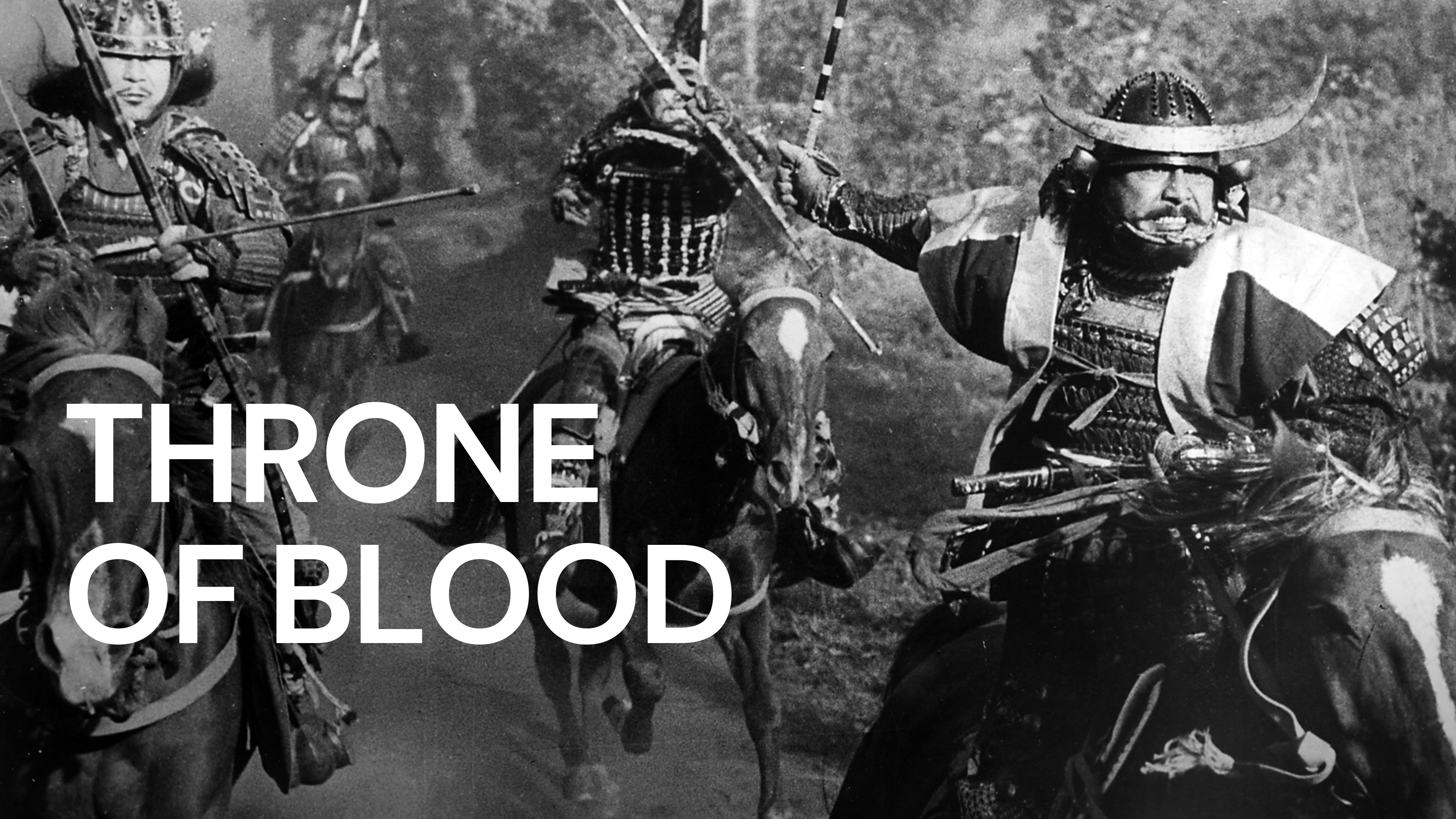
Welcome to the mesmerizing world of “Throne of Blood,” one of the most captivating and groundbreaking movies ever made. Directed by the legendary Japanese filmmaker Akira Kurosawa, this masterpiece combines elements of Shakespeare’s renowned tragedy, Macbeth, with Kurosawa’s unique storytelling and cinematic techniques. “Throne of Blood” takes viewers on a thrilling journey into a world of ambition, power, and betrayal. This article will delve into 35 fascinating facts about this iconic film, shedding light on its production, cast, and intriguing behind-the-scenes details. Whether you’re a die-hard fan or a newcomer to the world of “Throne of Blood,” get ready to be captivated by the rich history and intriguing secrets of this timeless classic.
Key Takeaways:
- “Throne of Blood” is a captivating Japanese film based on Macbeth, featuring intense performances, stunning visuals, and a cautionary tale about the dangers of unchecked ambition.
- The movie’s blend of Eastern and Western influences, meticulous attention to detail, and lasting impact on filmmakers make it a must-watch for fans of classic cinema.
Throne of Blood is a Japanese film directed by Akira Kurosawa.
Released in 1957, the film is an adaptation of William Shakespeare’s play Macbeth, which is set in feudal Japan.
The film’s original title in Japanese is “Kumonosu-j?”.
The title translates to “Spider Web Castle” in English, reflecting the dark and tangled web of ambition portrayed in the story.
“Throne of Blood” is considered one of Kurosawa’s greatest works.
The film is lauded for its innovative use of cinematography and powerful storytelling, earning it critical acclaim both in Japan and internationally.
Toshiro Mifune, one of Kurosawa’s frequent collaborators, plays the lead role in the film.
Mifune delivers a captivating performance as Washizu, the film’s equivalent of Macbeth. His intense portrayal adds depth to the character’s descent into madness.
The movie features a unique blend of Western and Japanese influences.
Kurosawa incorporates traditional elements of Noh theater, such as dance and symbolic gestures, while also utilizing dynamic camera movements inspired by Western cinema.
“Throne of Blood” is known for its atmospheric and haunting visuals.
Kurosawa expertly uses fog, rain, and mist to create an eerie and otherworldly atmosphere, enhancing the film’s sense of foreboding and supernatural elements.
The film explores themes of ambition, power, and fate.
Like Shakespeare’s play, “Throne of Blood” delves into the destructive effects of unchecked ambition and the inevitability of fate.
Kurosawa took creative liberties with the original play.
While the film stays true to the essence of Macbeth, Kurosawa introduces cultural and narrative changes to adapt the story to the feudal Japanese setting.
The soundtrack of the film is composed by Masaru Sato.
Sato’s score enhances the tension and drama of the film, heightening the emotional impact of key scenes.
The battle sequences in the film are meticulously choreographed.
Kurosawa’s expertise in directing action scenes is evident in the film’s thrilling battles, showcasing his mastery in capturing chaos and intensity on screen.
“Throne of Blood” features a memorable and tragic ending.
The film’s conclusion is both shocking and poignant, leaving a lasting impression on the audience.
The movie’s screenplay was co-written by Akira Kurosawa and Shinobu Hashimoto.
Hashimoto collaborated with Kurosawa on several of his films, contributing to the scriptwriting process.
“Throne of Blood” was a critical success upon its release.
The film won several awards and continues to be praised for its technical achievements and thought-provoking themes.
The film showcases Kurosawa’s trademark visual style.
Kurosawa’s use of long takes, dynamic framing, and striking compositions make “Throne of Blood” visually captivating.
The movie’s dialogue is primarily in Japanese, with English subtitles available for international audiences.
This allows viewers to fully appreciate the nuances of the performances while following the story.
“Throne of Blood” explores the destructive consequences of unchecked ambition.
Through the character of Washizu, the film highlights the moral and psychological disintegration that comes with a lust for power.
The film’s black and white cinematography adds to its haunting atmosphere.
The monochromatic visuals intensify the sense of darkness and tension in the story.
“Throne of Blood” pays homage to traditional Japanese theater.
Elements of Noh and Kabuki theater are incorporated into the film, adding a distinct cultural flavor to the adaptation.
Kurosawa’s meticulous attention to detail is evident throughout the film.
From the costumes to the set design, every aspect contributes to the authenticity and immersion of the feudal Japanese setting.
The film’s intense and dramatic performances leave a lasting impact on the audience.
The actors’ portrayal of the characters’ inner turmoil and descent into madness is gripping and memorable.
“Throne of Blood” showcases the futility of seeking power at any cost.
The tragedy that unfolds serves as a cautionary tale about the dangers of unchecked ambition.
The film’s striking visuals were achieved without the use of special effects.
Kurosawa relied on practical techniques and expert framing to create the film’s mesmerizing imagery.
The movie’s runtime is approximately 110 minutes.
Kurosawa effectively tells a gripping story within a concise timeframe, maintaining the audience’s attention throughout.
“Throne of Blood” has had a lasting influence on filmmakers around the world.
Its unique blend of Eastern and Western storytelling techniques continues to inspire filmmakers to this day.
The film’s screenplay was heavily researched, incorporating elements of Japanese history and culture.
Kurosawa and Hashimoto conducted extensive studies to ensure the film’s authenticity and accuracy.
“Throne of Blood” was nominated for the Golden Lion at the 1957 Venice Film Festival.
Although it did not win the award, the film’s international recognition helped solidify Kurosawa’s reputation as a master filmmaker.
The movie’s cinematography was done by Asakazu Nakai.
Nakai’s expertise in capturing the beauty and tension of each scene contributes to the film’s visual impact.
“Throne of Blood” showcases the destructive power of guilt and paranoia.
The characters’ inner turmoil and descent into madness are heightened by their guilt-ridden conscience.
The film’s title is symbolic of the entanglement of power and deceit.
Just as a spider’s web ensnares its prey, the characters in “Throne of Blood” are trapped by their own greed and ambition.
The movie’s production faced numerous challenges.
Kurosawa had to contend with limited resources, especially when recreating large-scale battle scenes on a modest budget.
“Throne of Blood” showcases the intricate interplay between ambition and loyalty.
The characters’ choices between personal ambition and loyalty to their superiors drive the narrative and reveal the complexities of honor.
The film has been analyzed and studied by film scholars and academics.
Its exploration of themes and storytelling techniques make it a rich subject of analysis in the realm of film studies.
“Throne of Blood” stands as a testament to Kurosawa’s ability to adapt classic stories to different cultural contexts.
The film successfully marries Shakespeare’s tale with the unique elements of traditional Japanese culture.
The movie’s success led to a resurgence of interest in Shakespeare’s works in Japan.
It introduced a new generation of Japanese audiences to the timeless themes and stories of the renowned playwright.
“Throne of Blood” remains a must-watch for cinephiles and fans of classic cinema.
Its powerful performances, captivating visuals, and timeless themes make it a significant addition to any film enthusiast’s collection.
Conclusion
In conclusion, Throne of Blood is a masterpiece of cinema that continues to captivate audiences with its unique blend of samurai drama, Shakespearean influence, and stunning visuals. With its rich storytelling, powerful performances, and innovative use of cinematography, the film has left an indelible mark on the world of cinema.
Through this article, we have explored 35 fascinating facts about Throne of Blood, shedding light on its production, inspirations, and impact. Whether you’re a fan of Akira Kurosawa, a lover of Shakespeare, or simply interested in exploring the art of filmmaking, Throne of Blood is a must-watch movie that will leave you in awe.
So, grab some popcorn, dim the lights, and immerse yourself in the world of Throne of Blood – a timeless cinematic gem that continues to enthrall audiences to this day.
FAQs
1. Who directed Throne of Blood?
Akira Kurosawa, a legendary Japanese filmmaker, directed Throne of Blood.
2. When was Throne of Blood released?
Throne of Blood was released in Japan on January 15, 1957.
3. Is Throne of Blood based on a play?
Yes, Throne of Blood is loosely based on William Shakespeare’s play Macbeth.
4. Who plays the lead role in Throne of Blood?
Toshir? Mifune, a renowned Japanese actor, plays the lead role of Washizu in Throne of Blood.
5. Was Throne of Blood a critical success?
Yes, Throne of Blood received critical acclaim and is considered one of Kurosawa’s finest works.
6. Is Throne of Blood available with English subtitles?
Yes, there are English subtitled versions available for international audiences.
7. What makes Throne of Blood unique?
Throne of Blood stands out for its fusion of samurai imagery and Shakespearean themes, creating a truly unique cinematic experience.
8. What awards did Throne of Blood win?
Throne of Blood won the Silver Lion award at the 1957 Venice Film Festival.
9. Are there any memorable scenes in Throne of Blood?
Yes, the film is known for its iconic scenes, including the atmospheric finale set in Spider’s Web Castle.
10. Is Throne of Blood easily accessible for viewing?
Yes, Throne of Blood is widely available on various streaming platforms and DVD releases.
If you're captivated by the masterful performances of Toshiro Mifune, explore more of his iconic roles in films like "Stray Dog." Dive deeper into the cinematic genius of Akira Kurosawa by uncovering fascinating facts about his groundbreaking film "Yojimbo." For fans of the samurai genre, "Lone Wolf and Cub: Sword of Vengeance" offers a thrilling journey filled with swordplay and intrigue.
Was this page helpful?
Our commitment to delivering trustworthy and engaging content is at the heart of what we do. Each fact on our site is contributed by real users like you, bringing a wealth of diverse insights and information. To ensure the highest standards of accuracy and reliability, our dedicated editors meticulously review each submission. This process guarantees that the facts we share are not only fascinating but also credible. Trust in our commitment to quality and authenticity as you explore and learn with us.


